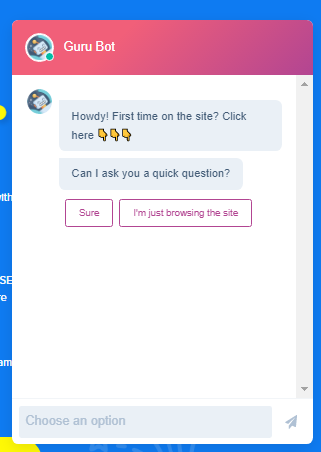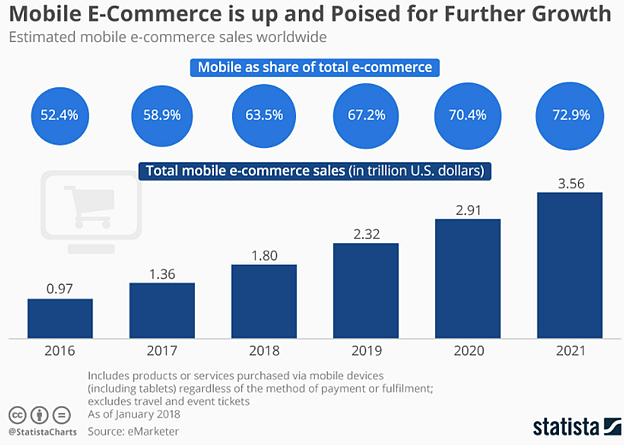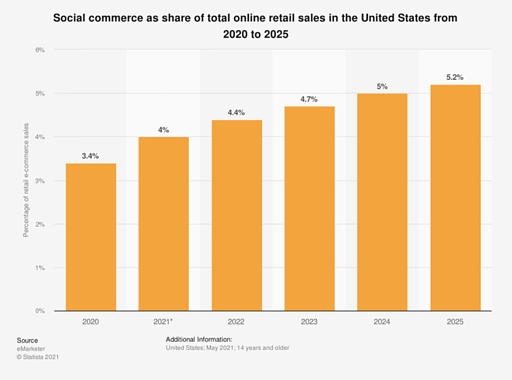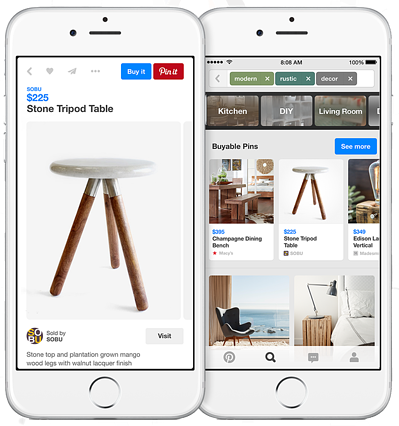6 eCommerce Marketing Trends to Watch Out For in 2022 


Twenty years ago, looking for your favourite product online, pulling out your credit card details, and waiting for the product to arrive on your doorstep was an alien concept.
Fast forward and online shopping has grown from non-existent to curiosity and is now a multi-billion dollar industry.
Case in point, online retail sales made up 19% of total retail sales in 2020. 12 months later and that figure has jumped to 35%.
What does that mean for your eCommerce business? It means buying things online isn’t a convenience, luxury, or oddity for consumers anymore – it’s a default way to shop.
Going hand-in-hand with the growth of eCommerce, the pandemic has forced businesses to re-evaluate their online retail approach in the post-COVID era. From new features to online shopping integrations that replicate the in-store shopping experience, marketing managers will need to embrace new technologies and support online sales to grow in the New Year.
In short, today’s consumers want a truly frictionless eCommerce shopping experience. No matter how well known your brand is or how revolutionary the products you sell, you risk falling behind if you don’t keep up with eCommerce trends.
Ready to up your eCommerce game? It’s time to leap into the future with 2022’s latest eCommerce marketing trends:
- Increased use of chatbots
- The growth of mobile shopping
- Voice search and conversational commerce expanding
- Social media channels becoming sales channels
- More payment methods
- Augmented reality delivering a more engaged shopping experience
What trends will shape eCommerce in 2022?
It’s never easy to look into a crystal ball and make predictions. Throw in the speed of technological change and consumer buying habits and making eCommerce predictions becomes even trickier.
But not impossible.
Brick-and-mortar stores aren’t going away any time soon. But your customers DO want convenience and which means 24/7 online shopping and good customer service. Consumer behaviours change. Then change again. Your business must keep up with these eCommerce changes as they happen to keep your customers happy and sales ticking over.
Adding to the challenge, competition for online sales is fiercer than ever. The pandemic forced businesses to move online as consumers stayed home. Even as restrictions end and life get back to a version of normal, more businesses are competing for online shoppers than ever before. It’s up to you to make sure you get your slice of the eCommerce pie.
As a $4.89 trillion industry, there are plenty of sales to go around. But you need to stay on top of the latest trends to keep the cash register (or online checkout) ticking over. That’s what we’ll show you how to do in this article. From chatbots to omnichannel selling, read on to discover the eCommerce marketing trends set to dominate in 2022 plus practical tips to help you future-proof your business.
Trend #1 – Increased use of chatbots and their impact on customer service
Successful eCommerce marketing comes down to exceptional customer service. Putting your customers first means they are more likely to spend time and money with you. But there’s a problem: your customers need help 24/7.
Enter chatbots.
Chatbots aren’t new in the eCommerce world. But they will become one of the more valuable eCommerce marketing trends in 2022. This stems from the advance in machine learning that allows for data collection and a more personal application of chatbot technology.
As machine learning improves, brands will leverage chatbots to improve customer service. It’s a myth to think chatbots remove the human touch and leave an online store sterile and empty. Instead, a chatbot lets your customers receive instant support 24/7 and guidance towards the right page – whether that’s a checkout, an FAQ, or a blog post.
If a shopper has a question at 2 am while browsing online, you need to be ready to provide the answer. FAQ pages offer a front-line defense, but a static FAQ page can’t respond in real-time to a question. With a chatbot, you can provide answers at midday and midnight. For example, a chatbot can notify a customer when their favourite product is out of stock, then recommend a similar product based on their preferences.
When abandoned carts cost eCommerce businesses $18 billion per year, a chatbot can remind customers of their abandoned carts so they can proceed to checkout or empty their cart. For shoppers who closed a tab by mistake or got distracted, this can turn a lost sale into a satisfied purchase.
If you think your customers prefer the personal touch, remember that most consumers prefer to communicate with businesses through messaging, not phone calls. Even better, 4 out of 10 customers say they don’t care if a customer support agent is human or AI-driven, as long as their problem is resolved.
How to implement chatbots in 2022
Here’s the good news: Chatbot technology is widely available already. Facebook Messenger is the most well-known example and makes it easy to use chatbots to support your social eCommerce goals (more on that below). There is also a range of user-friendly chatbot platforms you can use including Kik, Chatfuel, and Motion AI, so there’s no shortage of options available.
Remember, a chatbot is just one tool in your customer service toolbox. If a query becomes too complicated for your chatbot, you can bring a live agent into the chat.
Whatever type of chatbot you implement, the result is the same: The difference between a browser being closed or a sale being lost, and a flood of new online sales. If you haven’t implemented a chatbot on your eCommerce website, make it a priority in 2022.

Trend #2: Mobile shopping continues to grow at a rapid pace
Are you reading this on your smartphone?
Statistically, one out of every two of you are. With smartphone usage a part of everyday life, it’s no wonder mobile users want to buy products through their phones as easily as they would in a brick-and-mortar store.
Global consumer mobile commerce sales are estimated to hit $3.56 trillion by the start of 2022.
Driving this trend of mobile visitors is the release of new technology (like 5G), the increase in mobile-friendly websites (like this one), and a more mobile-dependant society. And the numbers don’t lie: 62% of smartphone users have made a purchase through their device.
Mobile commerce differs from traditional eCommerce – which is typically carried out via desktop computer or laptop. Larger screens have made it easier to display products and drive purchases. As consumers shop on mobile devices, businesses will need a mobile-friendly website designed for a seamless shopping experience, or a dedicated mobile app created to sell products.
It’s worth noting, 88% of shoppers will go to a competitor after a bad mobile experience. Even if you think your online store is easy to use and accessible, a further 84% of shoppers have experienced difficulty completing a mobile transaction – which makes it likely your site is creating friction between a sale without you knowing it.
How to make your site more appealing to mobile shoppers
Make your website mobile-friendly
Google searches on mobile exceeded desktop searches in 2015, and the numbers have only gone up since then. To make sure your shoppers are enjoying a user-friendly browsing experience, you’ll need to implement tips like:
Easy tap options: Make sure all buttons, links, and CTAs are easy to tap and working correctly. A button can quickly become an obstacle if it is hard to find or difficult to press. Think about how you hold your phone. Odds are, your thumbs control the screen. If you place a button out of reach of a shopper’s thumbs, you’re creating a user-experience flaw.
Simplify design: Website design and copy should be straightforward and user-friendly at the best of times. On a small mobile screen, it’s even more important that you make text easy to read. Try adding padding around menu items so they are easy to find and click.
Optimise contact forms: Studies show that an increase in form fields can decrease conversions. Make it easy for shoppers to fill in forms by keeping fields to a minimum to decrease friction and encourage site visitors to take action.
Leverage multimedia: 69% of people prefer to learn about new products by watching video content. In the New Year, utilise videos, infographics, images, and other multimedia instead of writing walls of text that make your audience’s eyes glaze over (and send them running without landing a sale).
Click to call links: Use clickable links instead of static images so shoppers can click to call your business. This removes the inconvenient step of having to enter a phone number manually and makes it easier for people to get in touch.
Mobile shopping is one of the eCommerce marketing trends going to grow in 2022. The COVID-19 pandemic has significantly impacted shopping habits – especially mobile commerce. Although retail shopping has since resumed, the ease and convenience of shopping online – particularly on the smartphones that your target audience has connected to their hip – will pose an attractive alternative to in-store experiences.

Trend #3 – Voice search and conversational commerce expands
Voice search isn’t going to replace traditional search any time soon. But as voice searches increase, optimising for voice search needs to be part of the game plan for all Ecommerce sites.
If voice search sounds like *another* marketing buzzword to deal with, it’s just the technology behind asking Siri, Cortana, Google, or Alexa to help with your online shopping. Think, “Alexa, where can I buy facemasks?”.
In 2022, the eCommerce marketing trend of voice technology, and the conversational commerce it drives, will take the next step. Remember, voice search is useful to consumers because it cuts back on search time and provides a more accessible alternative to jumping on Google and typing in a query.
The average person types between 30 and 35 words per minute, compared to 100 words spoken per minute. This delivers faster results as well as the convenience of multi-tasking. It’s easy to use voice search to order more ingredients while you’re cooking (but much harder to pull out a laptop and start Googling the nearest grocery stores while you’re stirring a risotto).
Voice eCommerce sales are predicted to reach $19.4 billion in 2023. Savvy eCommerce brands should make it easier to buy products by optimising for voice shopping.
Voice search is a major convenience for shoppers with a busy lifestyle. It can provide an effortless shopping experience perfect for multi-taskers.
It’s estimated that 75% of US households will own a smart speaker by 2025, making it crucial that you start implementing a voice search SEO strategy now. You can combine your eCommerce marketing strategy with your SEO strategy with the following tactics.
How to optimise your eCommerce site for voice search
Align your SEO strategy with your eCommerce SEO strategy
Voice search is different from traditional SEO. One of the key differences comes from the keywords used. Voice searches are typically longer and more conversational. For example, a typed Google search might be “Best Pizza Sydney”. A voice search may be longer and more natural, like “where is the best pizza restaurant near Bondi Beach?”.
Aligning your SEO and eCommerce SEO strategies means using longer and more conversational keywords, optimising your website for online shoppers using voice assistants, and more website traffic.
Design site structure to match user journey
A smooth user experience is crucial to boosting sales. You can improve your user’s experience by designing a site structure that makes their browsing and searching experience simpler. For example, use common questions in your eCommerce navigation menu.
This will help you rank for the conversational keywords we mentioned above. You can also add schema markup to highlight your content for rich snippets, content boxes, and updates on products and prices.
Improve page speed
Page speed isn’t just a matter of consumer preferences. Speed is crucial for traditional SEO and voice searches – so there’s no excuse not to improve load times. Shoppers want quick answers whether they’re asking about prices, brands, or shipping. If your site is slow to load, your rankings will suffer.
This is confirmed by Google who says…
“Users want to find answers to their questions quickly and data shows that people really care about how quickly their pages load. The Search team announced speed would be a ranking signal for desktop searches in 2010 and as of July 2018, page speed will be a ranking factor for mobile searches too.”
Improving page speed can be achieved by removing broken links, reducing image size, using redirects, and using caching.
Trend #4 – Social media channels become sales channels
Selling products on one social media platform is great. Selling products across multiple social media platforms is even better. In 2020, social sales made up an estimated 3.4% of total eCommerce sales – and that figure is expected to rise.

Source: BigCommerce
Shopping in 2022 will not be a linear experience. Optimising multiple social media channels to support shoppers will appeal to consumers who are going omnichannel. Higher online retail demand during the pandemic led to new retail features enabling easier shopping on Facebook, Instagram, and other social platforms – making your job easier.
Shoppers no longer need to jump from their favourite social apps to eCommerce websites. The ability to browse, click, and buy on social media will become crucial in 2022 to reach an audience that’s no longer just using Facebook.
Social commerce is effective because it shortens the traditional eCommerce path to a sale. Previously, the journey from interest to conversion can occur across multiple website pages and contact forms. This step-by-step process leaves plenty of holes for potential customers to fall out.
While many paid advertising strategies look to bring people from Google or Facebook ads to specific landing pages, social commerce is about keeping the sales funnel in ONE place. With billions of people using social media, simplifying your online shopping process can help decrease friction and increase sales.
View, click and buy.
That’s the social commerce solution.
How to sell through your social media channels in 2022
The social leaders like Facebook and Instagram have integrated shopping functionality, so the hard yards have already been done.
For example, on Facebook, your business has a “Shop” tab available. This lets Facebook users browse products, prices, and read about your inventory. Depending on your region, users can then purchase directly from your Facebook “Shop” or click through to your website to complete a purchase.
Sounds great, right? But there’s a challenge: all of your competitors are using multiple channels to sell too.
As we mentioned, when the pandemic began, social media platforms started rolling out eCommerce features to help consumers connect with their favourite brands when the in-store experience was on pause. Even as life returns to a version of normal, expect social selling to stay.
According to a recent survey, 76% of shoppers have bought something through a social media platform. But, as exciting as social media eCommerce is, implementing the right selling features is the true test. Here’s how to boost your chances of selling on social media.
How to sell on Facebook
Your competition may be using Facebook, but with 2.89 billion monthly active users there is plenty of demand to meet your supply. Selling on Facebook can be done through Facebook Shops (introduced in 2020).
Facebook Shops is Facebook’s newest eCommerce feature. Although business Facebook pages had the option of a “Shop” feature, Facebook Shops makes them more ‘shoppable’. (Ok, we’ll stop using the word ‘shops’ now).
Confused by the terminology? We don’t blame you. Here’s the difference between the eCommerce terms you need to know.
| Facebook Page shop | Facebook Shops |
| An existing feature that lets you display your inventory on your Facebook Business Page. Customers can click from your FB page to your website to complete a transaction. | A new feature that lets you display a ‘storefront’ aesthetic for a more integrated shopping experience. Customers can check out without leaving Facebook. |
This new feature lets you create a custom ‘storefront’ that takes a static Facebook feature and apply your branding across layout and style. Customers can browse and buy products without clicking through to your website.
How to sell on Instagram
130 million users click on Instagram shopping posts each month. If you’re not using IG to drive sales, what are you doing? Instagram makes it easy to embrace social selling with a range of eCommerce features. You’ll need a Facebook Shop to sell on Instagram (your Facebook Shop can be connected to eCommerce platforms like Shopify or WooCommerce).
Once your Instagram Shop is connected and live, you’ll be able to take advantage of features like:
- Shoppable posts
- Shoppable stories
- In-app checkout
- Influencer tagging
- Augmented reality
- Instagram shop
- Explore tab shop
Since Instagram is a visual platform, you can skip the frustration of multiple links and jumping from platform to website. Instead, customers can browse your product images like they’re browsing in-store and click to buy. Simple.
How to sell on TikTok
TikTok may be the new kid on the block but they’ve recently added eCommerce features to take advantage of the desire for social shopping. TikTok Shopping – the in-app purchasing experience – has replaced the more organic shopping experience. Previously, influencers spoke about their favourite products and users had to find them online. Now, TikTok brands can promote and sell products on the platform.
Take advantage of this feature by adding a ‘Shopping’ tab to your profile. This tab connects with a Shopify product catalogue and lets TikTok users browse without leaving the app then click to purchase.
You’ll need a TikTok Business account and a Shopify store, but if you tick these two boxes you should be adding this social selling feature to your arsenal.
How to sell on Pinterest
Pinterest may not get the attention of other social media platforms, but with 444 million monthly users and weekly conversions on Pinterest growing by 300% last year, Pinterest is a social platform you can use to your advantage.
Selling on Pinterest can be done with buyable pins. These allow shoppers to click on your pinned products displayed and buy directly through Pinterest. To set up buyable pins you’ll need a Pinterest Business Account that’s integrated with one of the five eCommerce platforms able to integrate with Pinterest. These include:
- Shopify
- BigCommerce
- Magento
- IBM Commerce
- SalesForce Commerce Cloud
Be sure to pin attention-grabbing images and add relevant keywords and descriptive titles to help Pinterest users find your pins. You can also save your pins to public boards so the general public can find them.

Trend #5 – More payment methods
Pay now. Pay later. Pay by mobile. Pay in instalments.
eCommerce customers demand choice when it comes to payments, and they’ll vote with their fingers.
The average eCommerce store loses 75% of its sales through shopping cart abandonment (ouch). If you sell products online, finding ways to reduce cart abandonment is crucial, and faster payments methods will help achieve this goal in 2022.
For an eCommerce payment to be seamless, you need to remove the obstacles that cause friction and lead to lost sales. This can be done by decreasing the waiting time for customers looking to make a purchase. There is a range of ways to do this from reducing the number of steps needed to providing auto-fill information that reduces the need for manual data entry.
Convenient and modern payment options are crucial in creating a streamlined eCommerce experience. Expect to see more ways to pay being adopted by leading eCommerce brands who understand that conversion rates can be increased by offering a variety of ways to pay.
4 ways to offer more payment options
Optimise mobile payments
4 out of 10 shoppers use their mobile phones to shop online. To encourage mobile shopping, you need to embrace mobile payments and make it easy for people to browse and buy using their mobile devices. This starts by aligning your online store with the app or software that meets your needs.
Mobile payment options include PayPal, Stripe, Square, Google Pay, Amazon Pay, Apple Pay, VISA Checkout, and more. Pay attention to features like processing fees to make sure your choice of payment method meets your shopper’s expectations.
Buy now. Pay later
Shoppers want to access their favourite products – even if they don’t have the funds to afford them right now. Maybe payday isn’t until next week. Or they’ve got their eye on a new couch or TV that’s slightly more than they’ve saved up. Enter the buy now, pay later (BNPL) payment model.
There were 197% more BNPL offers in the second quarter of 2020 compared to the second quarter of 2019. And this industry is expected to grow by 15 x in the next three years with platforms like Afterpay and Klarna offering shoppers a convenient way to get the products they want now and pay later without interest or extra fees.
Stored payment information
Asking your customers to fill in their contact and payment details for each purchase isn’t just a frustration for them, it hurts your conversions. Adding stored payment methods to your online store helps create a frictionless payment experience that saves shoppers time and reduces the effort needed to complete a purchase.
Giving your website visitors the option to store their payment info makes for a quicker and easier checkout process. This helps reduce churn and cart abandonment, with 18% of shoppers admitting the complicated checkout and payments process led to cancelling a planned online purchase. Removing the hassle of entering payment details for each purchase helps build engagement with your site visitors and helps foster repeat purchases.
Pay as a guest
Not every purchase comes from a repeat shopper. For consumers wanting to make a one-off purchase, consider allowing them to head to the checkout as a guest. With concern over online security, you can lose one-off sales if you force shoppers to add their details and create an account (let’s be honest, it’s tough to remember *another* password and username).
Trend #6 – Augmented reality will deliver a more engaging shopping experience
Although online shopping has become a default option for modern consumers, it does lack a crucial feature that in-store shopping has – the full tactile experience. It’s tough to try on clothes when shopping online. Or see how big a coffee table looks in a room when you’re looking at pictures online.
The continued emergence of augmented reality will help to bridge that gap as one of the new eCommerce marketing trends in 2022.
Augmented reality (AR) is the technological experience of a real-world object interacting with computer-generated information. This could be sounds, text, or images. Look no further than ‘Amazon Salon’ as an example of AR done right. This innovative use of augmented reality technology allows customers to test out different hair colours and styles through AR, without changing a single hair on their head.

More than a creative way to showcase services, AR can have a direct impact on your bottom line. 35% of people say they’d shop online more if they could virtually “try on” products before purchasing. And 22% of shoppers would be less likely to visit a retail store if AR was available through their favourite eCommerce brands.
The numbers don’t lie. AR allows your customers to remove the friction that comes with buying products online (“will it fit me?” or “how will it look in our house?”). Virtual try-on applications can be used for clothes, make-up, sunglasses, and a range of accessories. The technology can also be used with preview placement to show what a new couch or bookshelf will look like in a shopper’s home.
Why you should leverage augmented reality technology in 2022
AR is starting to take off on the back of COVID-19 and the need for online retail stores to deepen customer relationships through digital channels. Implementing AR strategies offer the following advantages to your online business.
Purchasing confidence: Once a shopper can visualise an item of clothing on their body or a piece of furniture in their home, it becomes easier to make a purchase with confidence that it’s a “good fit”.
Reduced return rates: AR technology is the epitome of ‘try before you buy’. This helps online customers make informed purchasing decisions and bring return rates down as consumers get what they want the first time.
Higher conversion rates: Data from Shopify reveals products advertised with AR enjoy up to 94% higher conversion rates than products without. The more confidence a shopper has in your products, the more likely they are to make a purchase.
Drives engagement and relationships: Experiential marketing has long been the most effective at building relationships and driving engagement, but also comes with higher costs. AR is easier to deliver through smartphones, bringing costs down, while creating valuable engagement with shoppers.
Although AR may seem futuristic, AR capabilities are built into leading eCommerce platforms including Shopify, WooCommerce, BigCommerce, Magento, and SquareSpace. 3rd party software is also available if you’re using a bespoke website builder so there’s no reason to miss out on this eComm trend in 2022.
Over to you…
Staying on top of 2022’s eCommerce marketing trends is crucial if you want to reach more of your target audience and land sales. By adopting these trends as they emerge, you’ll drive engagement and clicks as a leader in the online retail space – and see the payoff on your bottom line.
At the same time, it can be tough to know where to start when growing your eCommerce business – that’s where we come in.
If you want to accelerate your results, increase eCommerce sales, and drive more revenue, we can help. We’ve written the definitive Guide to eCommerce SEO (seriously…don’t show this to your competition). It’s 100% free and packed full of tips to help your online retailers grow.
Or, claim a FREE digital marketing audit worth $2,000 to find the holes in your eCommerce store and discover how to patch them up – with a 6-month eCommerce gameplan – to ensure you hit 2022 with a store that’s set up for success.
Click below to find out more.









